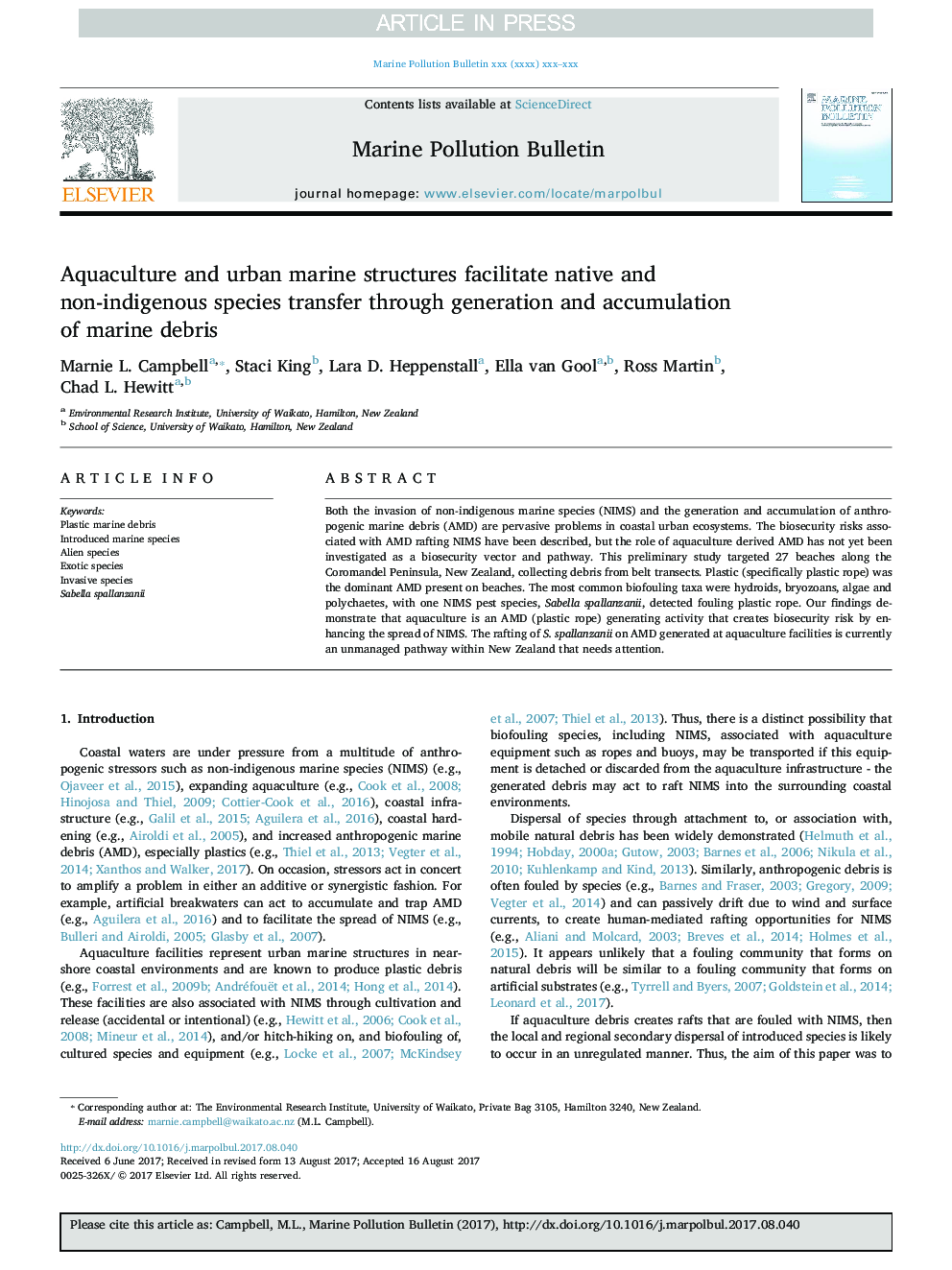| کد مقاله | کد نشریه | سال انتشار | مقاله انگلیسی | نسخه تمام متن |
|---|---|---|---|---|
| 8872359 | 1622714 | 2017 | 9 صفحه PDF | دانلود رایگان |
عنوان انگلیسی مقاله ISI
Aquaculture and urban marine structures facilitate native and non-indigenous species transfer through generation and accumulation of marine debris
ترجمه فارسی عنوان
آبزی پروری و سازه های دریایی شهرداری، انتقال گونه های بومی و غیر بومی را از طریق تولید و تجمع آوارهای ساحلی تسهیل می کنند
دانلود مقاله + سفارش ترجمه
دانلود مقاله ISI انگلیسی
رایگان برای ایرانیان
کلمات کلیدی
موضوعات مرتبط
مهندسی و علوم پایه
علوم زمین و سیارات
اقیانوس شناسی
چکیده انگلیسی
Both the invasion of non-indigenous marine species (NIMS) and the generation and accumulation of anthropogenic marine debris (AMD) are pervasive problems in coastal urban ecosystems. The biosecurity risks associated with AMD rafting NIMS have been described, but the role of aquaculture derived AMD has not yet been investigated as a biosecurity vector and pathway. This preliminary study targeted 27 beaches along the Coromandel Peninsula, New Zealand, collecting debris from belt transects. Plastic (specifically plastic rope) was the dominant AMD present on beaches. The most common biofouling taxa were hydroids, bryozoans, algae and polychaetes, with one NIMS pest species, Sabella spallanzanii, detected fouling plastic rope. Our findings demonstrate that aquaculture is an AMD (plastic rope) generating activity that creates biosecurity risk by enhancing the spread of NIMS. The rafting of S. spallanzanii on AMD generated at aquaculture facilities is currently an unmanaged pathway within New Zealand that needs attention.
ناشر
Database: Elsevier - ScienceDirect (ساینس دایرکت)
Journal: Marine Pollution Bulletin - Volume 123, Issues 1â2, 15 October 2017, Pages 304-312
Journal: Marine Pollution Bulletin - Volume 123, Issues 1â2, 15 October 2017, Pages 304-312
نویسندگان
Marnie L. Campbell, Staci King, Lara D. Heppenstall, Ella van Gool, Ross Martin, Chad L. Hewitt,
